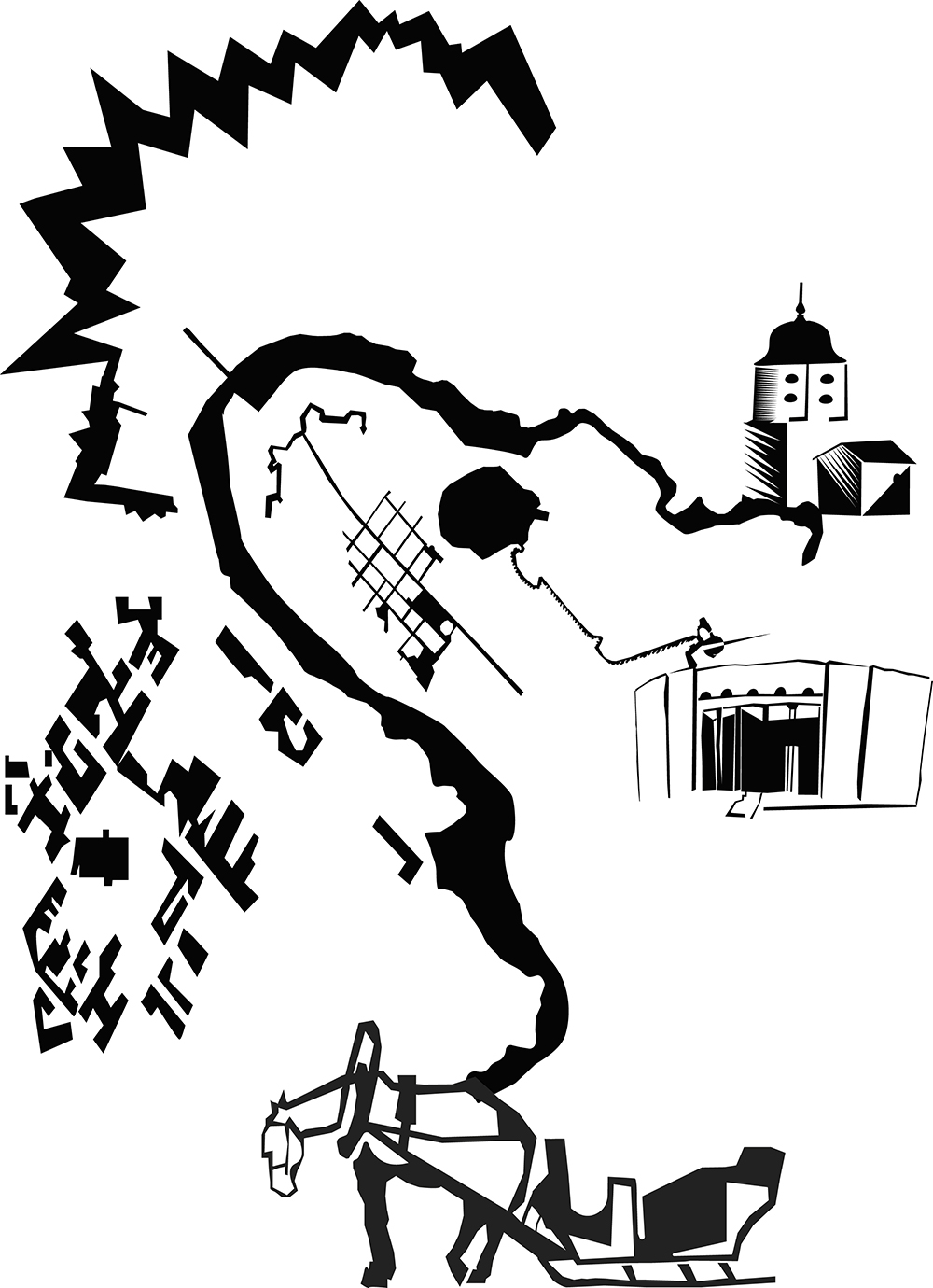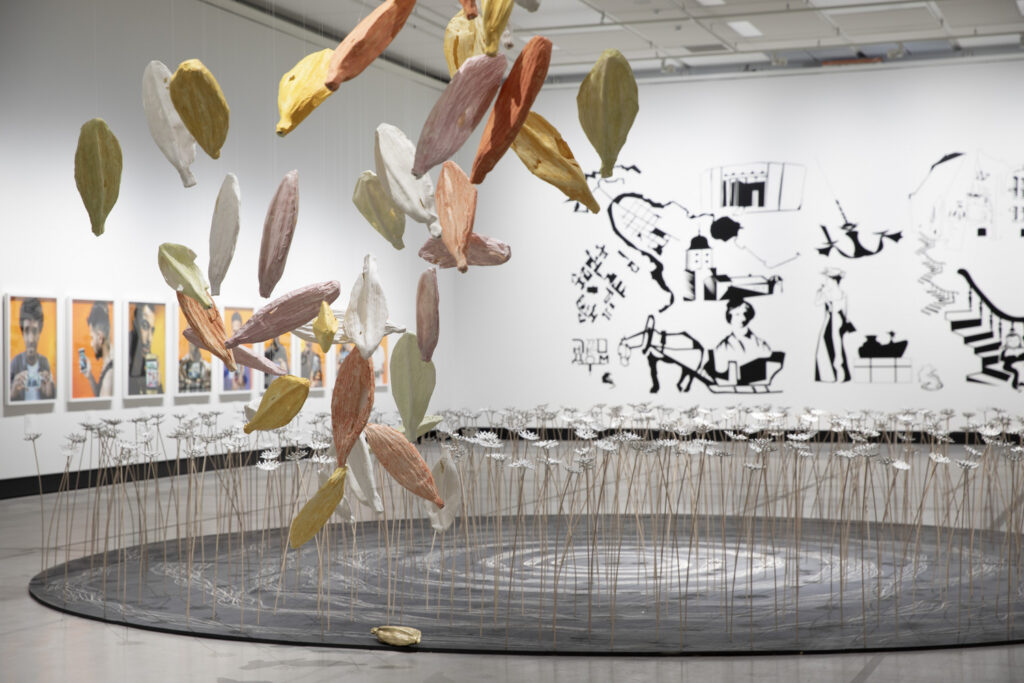Destination
When you leave your home behind, when your home street, business, relatives, playmates, grandmother, school and pupils, local restaurant and newspaper seller are now there, somewhere. In a new city, new homes, a strange language, strange people await you. You must get used to the food, and the fact that the light and colours are different.
These situations and the emotions intertwined with them are commonplace nearly everywhere in the world. By the end of 2022, there were over 100 million people in the world who have fled their home district. Of these, over 35 million are refugees, 62 million internally displaced and over 5 million asylum seekers.
Destination brings together twelve Finnish contemporary artists whose work explores the themes of abandonment and the discovery of the new. Some of the works use documentary means to tell the story of forced emigration, its causes and consequences. Some confront the viewer with the emotions that the people who left their homes encountered in their flight. Both regret and relief are present in the works.
The artists in the exhibition
Stefan Bremer, Kalle Hamm, Dzamil Kamanger, Joel Karppanen, Zagros Manuchar, Luciana Mariano, Melina Paakkonen, Anu Pentik, Sepideh Rahaa, Kaj Stenvall, Kirsimaria E. Törönen and Ilkka Väätti.
-
Stefan Bremer photographed asylum seekers who arrived in Finland in 2015. Bremer shot a series of images in which asylum seekers show the most important picture on their mobile phone and tell its story. The images and stories are heartrending, telling of longing and loss.
Kalle Hamm’s works explore, among other things, the relationship between the human and plant kingdoms. The work in the exhibition addresses burial as part of humanity. Burial turns our limited temporality into history. A grave makes a place meaningful to its makers, and it has been used at times as proof of ownership of a place, of land – we have always lived here.
In the photographs of the exhibition, Dzamil Kamanger sits and weaves a work from small glass beads. As a visual artist, his work includes ceramics, performances, beadwork and community art. His most renowned works are beadwork passports and visas. His first passport was a refugee passport, and that in itself granted him a lot of freedom.
Joel Karppanen has moved from the countryside and an industrial town to Helsinki. His new body of work explores Helsinki, a city in transition. Its current working class is represented by food couriers, many of whom have moved to Finland from elsewhere. Karppanen worked as a food courier for a month and wrote a documentary essay on the subject.
Zagros Manuchar is a filmmaker and artist whose cinematic works have addressed war themes and the human rights of children. A new video work, with war refugees as its subject, has been shot for the exhibition. It is based on stories and accounts of war told by many different people living in Finland. The work’s thematics are also important to Manuchar because of his own roots. He came to Finland as a UN refugee at the age of four in 1994.
Luciana Mariano is a third-generation naïve painter. She held her first exhibition in Sao Paolo, the city of her birth. She moved to Finland in 2017. Mariano paints like a visual diary, and the paintings still strongly reference her Brazilian roots. The exhibition features larger paintings than before, they tell of the meeting of cultures, discovery of the new and how the experience travels with you everywhere.
Melina Paakkonen paints stories, kinds of fables transferred to the modern day, where the boundary between human and animal disappears and humour is intertwined in tiny details. The world painted on a background of characters and stories is a mixture of the glamour and warmth of a past age. Reality is a little circus, a little musical and a lot of story. The large-scale paintings in the exhibition tell of the meaning of place, loss, and discovery of the new.
Anu Pentik’s career as an artist, which has spanned more than 50 years, has been an eventful journey, combining the northern nature, which has inspired her works, with different aspects of humanity. In recent years, Pentik has exhibited large-scale spatial works that are united by a connection to time and place. They simultaneously display roots and dreams. For the exhibition, she has built a large installation, mainly composed of ceramics.
Sepideh Rahaa’s work explores power structures and externally imposed norms. She uses storytelling and gives voice to everyday resistance. Her video works address womanhood through feminist politics and create space for dialogue. They are openly personal, exploring relationships, concepts, perceptions, identity, liberation, representation and otherness.
Kaj Stenvall is one of Finland’s most visible contemporary artists. For a long time now, he has combined a number of stylistic trends of painting into his own unique blend. Stenvall became a household name in Finland for his paintings that feature an expressive and adaptable duck figure. Stenvall’s new series of paintings addressing Russia’s war of aggression will go down in the history of anti-war art as an exceptionally direct and timely body of work.
Kirsimaria E. Törönen is an artist who has broken away from paper and taken her drawings with her to different materials. In her works, she interprets art and cultural history by highlighting the subject with a line. From the line grow symbols that reflect the human need to understand and explain the world they experience. A new large-scale work has been created for this exhibition. It tells about leaving home and portrays a picture of multicultural Vyborg, where people left as refugees during the Second World War.
Since 1993, Ilkka Väätti has been working on an extensive series of works entitled MUNDUS, which includes bas-relief paintings, graphics and sculptural entities. Väätti interprets motifs he finds in art museums, churches and other cultural sites. The exhibition features bas-relief paintings from the Mundus series, the subjects of which relate to places which crises have forced people to leave, and abandon parts of their own cultural history.
Curator: Veikko Halmetoja
Concept: Jarkko Lehtopelto

